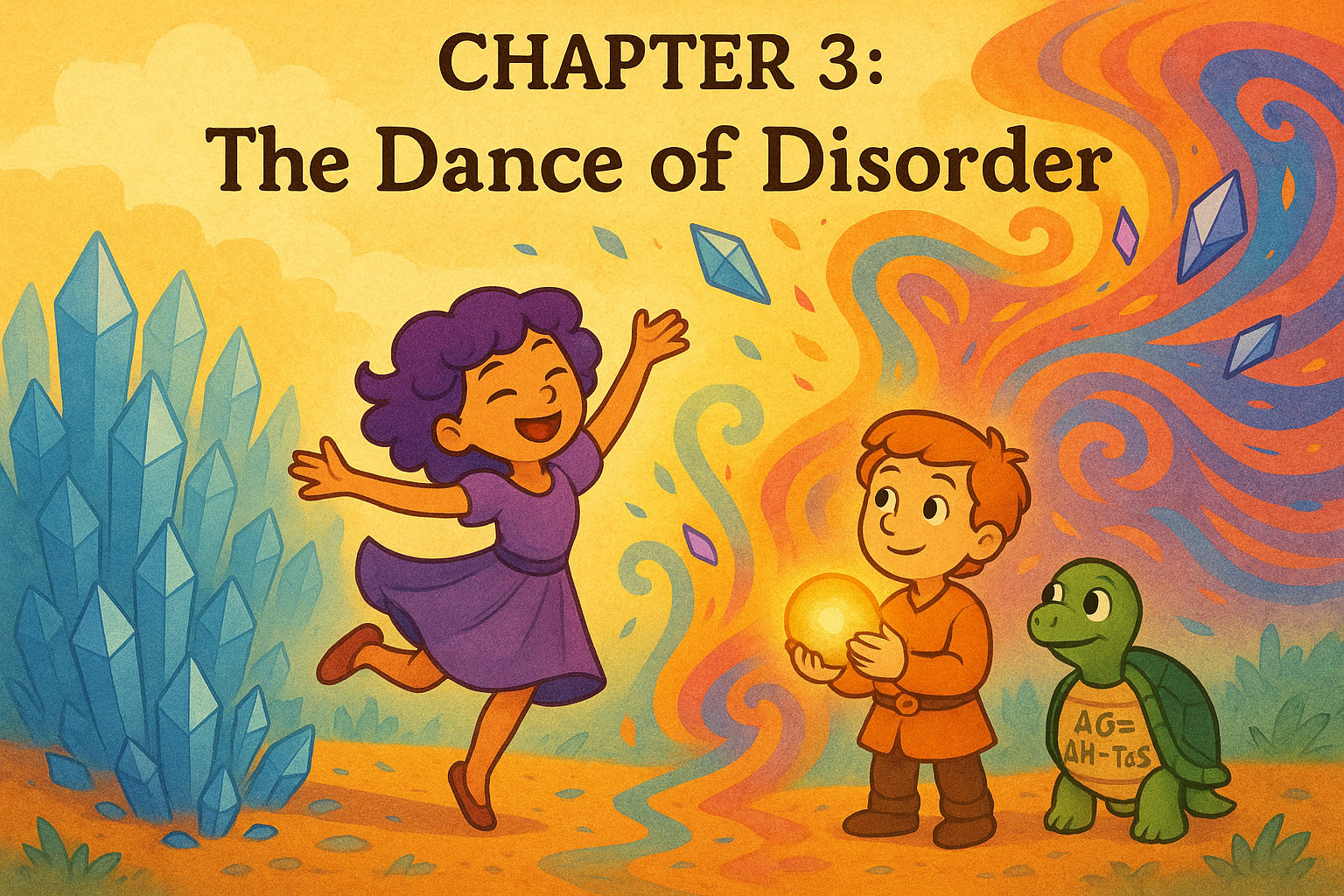Chapter 3: The Dance of Disorder
Entropy teaches the twins about the beauty of disorder...

The twins arrived at a crystal garden where everything was arranged in perfect, rigid patterns. Entropy immediately began to dance, twirling and leaping through the garden.
As she danced, the crystals began to loosen and move, creating beautiful, random patterns. Colors mixed and swirled in ways they never had before.
"What are you doing?" asked Enthalpy, watching in amazement.
"I'm increasing the entropy!" Entropy laughed. "The measure of disorder or randomness in a system. The more ways things can be arranged, the higher the entropy!"
Gibbs the Guide appeared beside them. "The universe always tends toward increasing entropy," he explained. "It's a natural law. Systems with higher entropy are more probable than systems with lower entropy."
"So our perfect picnic spot..." Enthalpy began.
"...will depend on both energy AND entropy!" Entropy finished, still dancing.
Entropy
Entropy (S) measures molecular disorder or randomness. The Second Law of Thermodynamics states that the total entropy of an isolated system always increases over time.
Common Questions:
What is entropy?
Entropy (S) is a measure of disorder or randomness in a system. The more ways particles can be arranged, the higher the entropy. In our story, Entropy's dance represents increasing disorder and randomness.
What does the Second Law of Thermodynamics state?
The Second Law of Thermodynamics states that the total entropy of an isolated system always increases over time. Systems naturally tend toward states of higher entropy (more disorder).
Why do systems prefer higher entropy?
Systems with higher entropy are more probable than systems with lower entropy. There are simply more possible ways to arrange particles in a disordered state than in an ordered state.